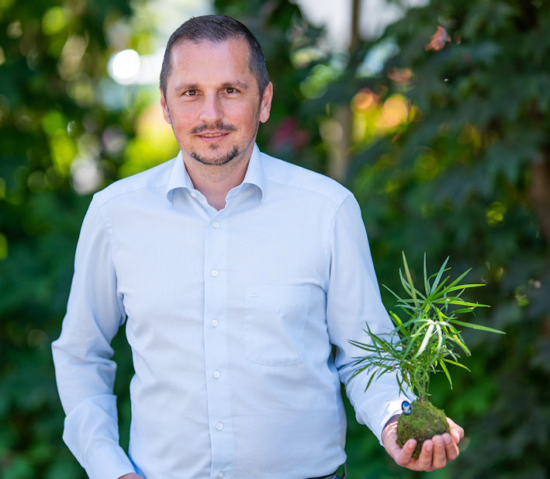SBTi confirms Kraiburg Austria’s goals
 Sustainability manager Gerold Schachner says the SBTi concept convinces Kraiburg Austria “in all its details” (Photo: Kraiburg Austria)
Sustainability manager Gerold Schachner says the SBTi concept convinces Kraiburg Austria “in all its details” (Photo: Kraiburg Austria)
Stefan Mayrhofer, managing director of Kraiburg Austria, is convinced that environmental protection and sustainability awareness are “topics that we owe to future generations.” This is the reason the retreading specialists strives to act in an environmentally responsible manner, its receipt of the EMAS certificate three years ago serving as evidence of these efforts.
Kraiburg Austria aligns its management of energy, raw materials and resources and efforts to reduce CO2 emissions with Science Based Targets (SBT), and the company reports that the SBT Initiative (SBTi) has now confirmed that its submitted goals comply with SBT criteria and recommendations. Kraiburg Austria thus announces that it is “in line with a 1.5° C path.”
The retreading specialist has committed itself to a 68.8 per cent reduction in absolute greenhouse gas emissions (GHG emissions) from electricity, gas and fuels by 2031 in relation to the reference year 2019. Over the same period, it aims to reduce GHG emissions from purchased goods and services as well as from transport by 30 per cent.
“We are delighted that our submitted concept has been approved by the SBTi,” says Gerold Schachner, sustainability manager at Kraiburg Austria. “We have carefully developed the goals and measures over the course of around one year. And are now proceeding with the implementation of the various, necessary steps with zeal.”
Convinces in all its details
The SBTi has become an important platform for supporting companies’ efforts to reduce greenhouse gas emissions and to ensure their goals are scientifically sound and satisfy global climate goals such as the Paris Agreement of 2015. Companies and organisations that follow SBT set concrete goals for reducing emissions and regularly monitor their progress to ensure they’re on the right track.
“The concept of the SBTi convinces us in all its details,” Gerold Schachner adds. “The initiative also takes the individual circumstances and business models of the respective organisation into consideration in the evaluation and therefore sets realistic goals. We will therefore be able to put these into practice by 2031 and make a sustainable contribution to protecting the environment.”





Comments